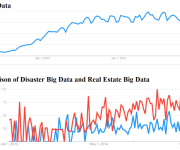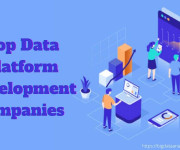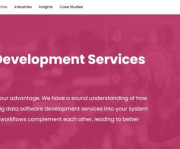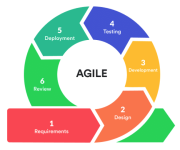Database modernization without losing decades of accumulated business intelligence
For many enterprises, databases are more than just storage—they’re the backbone of institutional memory. Over years, sometimes decades, companies accumulate valuable business logic, performance patterns, and decision-making frameworks embedded deep within legacy systems. But as technology rapidly evolves, clinging to outdated infrastructure becomes a liability. The challenge? Modernizing without compromising what matters most—data integrity and business continuity. In this article, we’ll explore how expert-led IT systems migration services protect your core intelligence during transitions, and what strategic gains you can expect from modernization done right.
Why Modern Enterprises Must Rethink Legacy IT Infrastructure
Legacy IT systems may have supported your business for years, but they weren’t built for today’s speed, security demands, or cloud-first strategies. As technologies evolve, outdated infrastructure becomes more than just inefficient—it becomes a blocker to growth and a risk to continuity. Below, we break down three specific reasons why modernization can’t wait.
The hidden costs of maintaining legacy systems
Older systems often appear “cheaper” to maintain—but the real costs add up quickly. Aging hardware, rising support expenses, and limited compatibility with modern tools force companies into expensive workarounds. These inefficiencies slow down operations and consume IT resources that could be invested in strategic projects.
Security vulnerabilities and compliance risks
Legacy platforms lack modern security features like end-to-end encryption or real-time threat detection. This exposes businesses to growing cyber threats. Many also fail to meet current compliance standards, putting sensitive data—and the company’s reputation—at risk during audits or breaches.
Innovation barriers and scalability issues
New digital tools require flexible, API-ready systems. Legacy infrastructure, built for siloed workflows, doesn’t scale easily. This makes cloud adoption, automation, or integration with third-party platforms a challenge, slowing down innovation and response to market needs.
What Are Enterprise IT Systems Migration Services?
Enterprise IT systems migration services support organizations in transitioning from outdated technologies to modern platforms—without losing access to critical data or disrupting day-to-day operations. These services cover far more than moving data from one system to another. They include a structured approach to redesigning infrastructure, upgrading software environments, and ensuring system interoperability.
Handled correctly, a migration allows businesses to modernize without compromising the institutional knowledge embedded in legacy systems.
Overview of the migration process: from assessment to execution
A typical migration begins with a comprehensive assessment—mapping current systems, identifying dependencies, and outlining risks. Next comes planning and design, where technical strategies are developed to align new systems with business goals. The execution phase involves data transfer, system setup, and real-time testing, often completed in stages to minimize disruption. Finally, the process ends with validation and optimization, ensuring everything functions as expected in the new environment.
Types of migrations: cloud, hybrid, infrastructure, application-level
Depending on business needs, migrations can take different forms:
- Cloud migration: Moving systems or data to public, private, or multi-cloud environments.
- Hybrid migration: Integrating legacy systems with cloud-based services for flexibility.
- Infrastructure migration: Upgrading servers, storage, or networks.
- Application-level migration: Replatforming or reengineering software to work with modern tech stacks.
Each type involves unique technical and strategic considerations.
Business benefits of professional IT migration services
Partnering with a provider of enterprise IT systems migration services helps companies avoid common pitfalls—like data loss, system downtime, or budget overruns. More importantly, expert-led migrations align IT capabilities with business priorities, unlocking better performance, easier integrations, and a clear path toward innovation.
Experts in Legacy Systems Integration: Why Their Role Is Critical
Modernization doesn’t always mean starting from scratch. In many enterprises, legacy systems still support essential operations and contain valuable data. The challenge is to connect these systems with modern platforms—without losing continuity or creating risk. This is where experts in legacy systems integrations play a crucial role. Their job is to ensure that legacy and modern environments work together seamlessly, so business operations continue without disruption.
Avoiding data loss and downtime during system transitions
Data integrity is often the first casualty of a poorly managed migration. Experienced integration specialists design detailed data flow plans, implement backup protocols, and use phased rollouts to minimize risk. Their approach ensures that your systems stay online—and your business stays operational—throughout the entire transition.
Ensuring interoperability across platforms and applications
Legacy systems often use outdated or proprietary protocols, making it difficult to integrate them with modern APIs or cloud tools. Experts solve this by building custom connectors, applying middleware layers, or designing new API bridges to enable smooth data exchange and process automation.
Strategic Advantages of IT Systems Modernization for Enterprises
Modernizing IT systems is more than a technical upgrade—it’s a strategic move that positions your business for long-term growth. By replacing rigid legacy architecture with modern, scalable platforms, enterprises gain the flexibility to adapt faster, cut operating costs, and lead digital transformation efforts with confidence.
Enhanced business agility through scalable infrastructure
Modern infrastructure—especially cloud-based—lets businesses scale resources on demand. This means faster deployment of new services, quicker response to market changes, and the ability to support global operations without overhauling the backend each time. Agility isn’t just a buzzword—it’s a competitive edge.
Cost-effectiveness and reduction in technical debt
Legacy systems accumulate technical debt—outdated code, unsupported tools, and inefficient processes that become costly to maintain. Modernization helps reduce this burden by simplifying infrastructure, automating manual workflows, and cutting redundant systems. Over time, this translates to significant savings on support, licensing, and IT overhead.
Empowering digital transformation initiatives
Many digital initiatives—like AI, advanced analytics, and omnichannel experiences—require real-time data and system interoperability. Outdated infrastructure holds these efforts back. Modern platforms, on the other hand, provide the foundation needed for experimentation, innovation, and faster product delivery—making transformation a reality instead of a long-term goal.
Conclusion: Modernization Without Compromise
Modernizing legacy systems doesn’t mean leaving behind the intelligence your business was built on. With the right strategy—and support from specialists in enterprise IT systems migration services—you can unlock new capabilities, reduce risk, and prepare for what’s next, without sacrificing what already works.
Whether you’re planning a full cloud migration or integrating legacy applications into a hybrid environment, the right partner ensures your transformation is seamless, secure, and aligned with long-term goals.
























